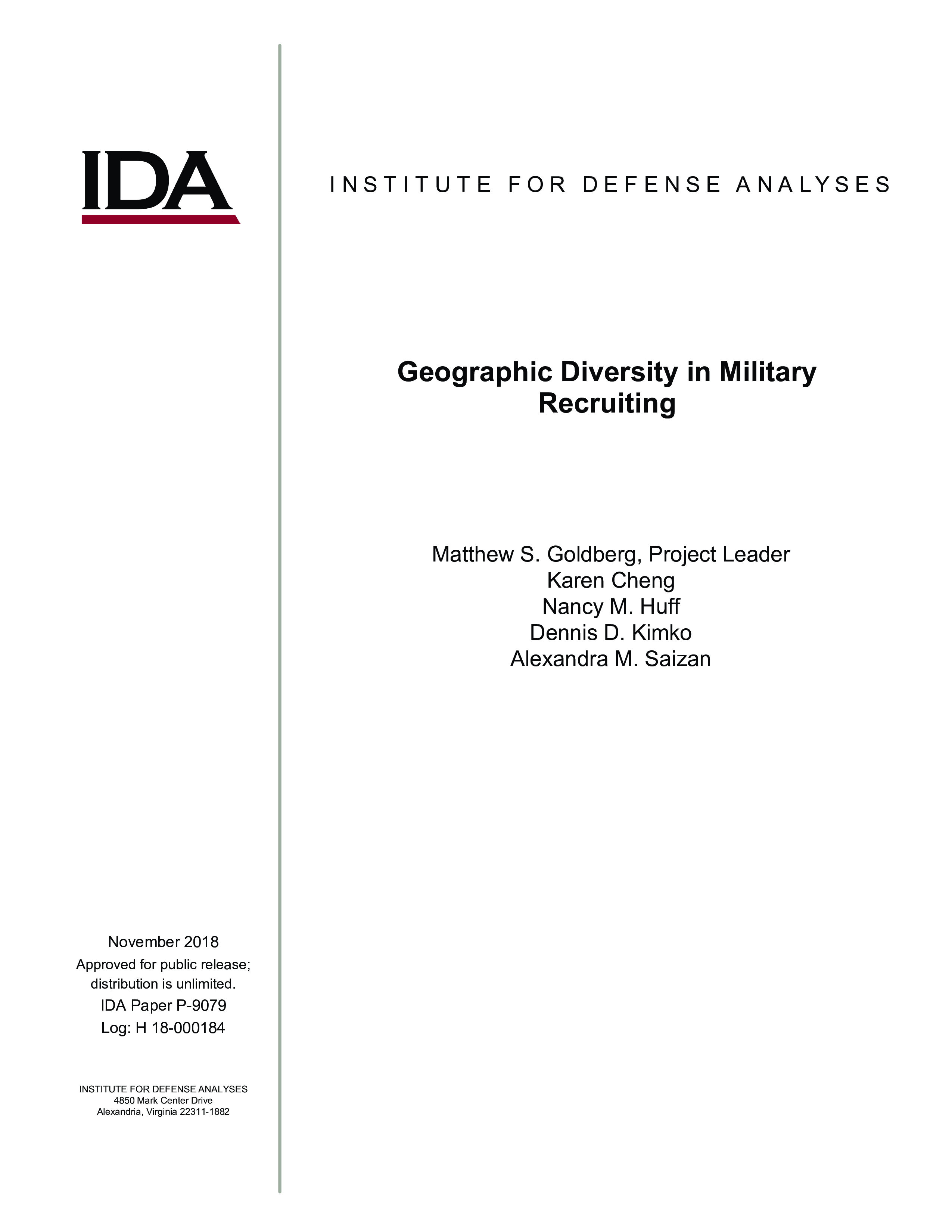From the beginning of the all-volunteer force (AVF) in 1974—and, indeed, in the
public dialogue leading up to the implementation of the AVF—concerns were raised about
various aspects of diversity in the military. The Congress chartered the Defense Manpower
Commission in 1973; the Commission reported its findings in 1976. The Commission
pondered whether the diversity in race, gender, economic status, educational status, and
tested aptitude that been achieved to varying degrees under the draft could be sustained in
an AVF. The Commission’s report highlighted geographical diversity as the one dimension
along which the draft had largely been successful.
Concerns about geographical diversity were publicly aired by the Department of
Defense (DoD) as early as 1987, about a dozen years into the AVF. The 1987 report noted
the stronger recruiting performance in the rural areas and in the south and southwest. The
report attributed that phenomenon to a higher concentration of military installations in
those areas, to larger numbers of military retirees, and to individuals with stronger military
orientation. Although the stellar recruiting performance from those areas of the United
States was certainly welcome, the concern was whether the all-volunteer military might
become isolated to largely just those areas.
Much more recently, in 2016, then-Secretary of Defense Ash Carter opined that
too many of America’s young men and women have no personal connection
to our military. As a result, they give no real consideration to the possibility
of joining us … It is my firm conviction that the Department of Defense
must have access to 100 percent of America’s population for our allvolunteer
force to be able to recruit and retain the highly qualified men and
women needed for the Force of the Future.
Secretary Carter specifically identified geography as one of the dimensions along which
the military needed to improve its diversity.

